Pildong Myeonok (필동면옥)
1.1Km 2021-03-30
26, Seoae-ro, Jung-gu, Seoul
+82-2-2266-2611
Most foods from the northern region are characterized by their mild taste. In particular, Pyeongyang-style cold buckwheat noodles has a milder flavor compared to Hamheung-style cold noodles. Pildong Myeonok's cold buckwheat noodles may taste bland for those who are used to stronger flavors or seasonings, but it is praised by others who prefer mild flavors. The refreshing after taste of broth and chewy noodles are enough to delight one's tastebuds.
Pyeongyang-style dumplings is another popular dish at Pildong Myeonok.
Hotel Crown Insadong (호텔 크라운-인사동)
1.1Km 2021-02-10
9, Samil-daero 30-gil, Jongno-gu, Seoul
+82-2-3676-8000
Hotel Crown is a premier hotel that was renovated in May 2002. The hotel is in close proximity to Jongno and Insa-dong, making it a convenient place to stay for tourists.
Festival de los Faroles de Loto (연등회)
1.1Km 2025-03-20
Ujeongguk-ro 55, Jongno-gu, Seúl.
02-2011-1744/5/6/7
Esta celebración tradicional budista tiene unos 1.200 años de historia, desde la época del reino de Silla. En los tiempos de la dinastía Goryeo era conocido como Yeon Deung Hoe, mientras que durante la dinastía Joseon se le llamaba Gwandeungnori. Hasta el día de hoy se mantiene esta tradición que ha sido reconocida como Patrimonio Cultural Intangible de la Humanidad por la Unesco. La ciudad y los templos se iluminan con los faroles de loto y hay vistosos festejos, desfiles y actividades.
Gangseo Myeonok (강서면옥)
1.1Km 2020-04-17
35, Sejong-daero 11-gil, Jung-gu, Seoul
+82-2-752-1945
Gangseo Myeonok has been famous for over fifty years, having been the food of choice served to visiting dignitaries from North Korea at the time of the South-North Red Cross Conference. The restaurant has succeeded in carrying on the tradition of Pyeongyang-style naengmyeon. The native buckwheat from Gangwon-do mixed with starch makes for fine noodles, and the wonderful broth is made from beef brisket with white radish kimchi.
Gaeseong Mandu Koong (개성만두 궁)
1.1Km 2021-03-24
11-3, Insadong 10-gil, Jongno-gu, Seoul
+82-2-733-9240
Gaeseong Mandu Koong has served Gaeseong-style mandu (dumplings) for more than 30 years. The elderly proprietor, who fled south during the Korean War runs this restaurant with the help of her granddaughters. Characterized by its delicate taste, Gaeseong mandu stuffing consists of pork and various vegetables such as Chinese cabbage and pumpkin. This restaurant's mandu is so popular that it sometimes gets sold out even before evening. Typical menu includes mandu-jeongol (hot pot) and mandu-guk (soup). The hot pot is made of various ingredients including mandu, rice cakes, mushrooms, and meat, and serves two to three persons. For several persons, it's recommended to eat bossam (boiled meat slices wrapped in lettuce leaves or kimchi) and Korean-style pancakes.
Jaembaeok (잼배옥)
1.1Km 2021-03-30
68-9, Sejong-daero 9-gil, Jung-gu, Seoul
+82-2-755-8106
It has over 80 years of tradition. This Korean dishes restaurant is located in Jung-gu, Seoul. The representative menu is ox bone soup.
Ssamzigil (쌈지길)
1.1Km 2025-05-26
Insadong-gil 44, Jongno-gu, Seúl
En las animadas calles de Insa-dong se fundó un área de 500 m de largo el 18 de diciembre de 2004. Este edificio tan particular fue construido conectando las encantadoras calles con escaleras en forma de espiral. Al ir haciendo compras por las divertidas y encantadoras tiendas hasta el último piso, llegará a Haneulmadang, donde podrá tener una buena vista del cielo. Ssamzigil cubre una superficie de aproximdamente 4.000 m² con más de 70 tiendas de artesanías, galerías de arte, restaurantes y tiendas de recuerdos.
Calle de los Hanok de Ikseon-dong (익선동 한옥거리)
1.1Km 2025-05-26
Ikseon-dong, Jongno-gu, Seúl
Templo Jogyesa en Seúl (조계사(서울))
1.1Km 2024-05-17
Ujeongguk-ro 55, Jongno-gu, Seúl
El templo Jogyesa es el núcleo del budismo zen en Corea, en él se encuentran la oficina principal de administración del budismo coreano y la sala en donde se realiza la asamblea general, entre otras instalaciones. Fue construido hacia finales del siglo XIV (época de Goryeo) en el interior del actual parque Susong, pero fue destruido (en un período indeterminado) debido a un incendio, y fue reconstruido en el año 1910. A lo largo de su historia ha tomado varios nombres, hasta que recibió la denominación de Jogyesa en el año 1954. El nombre deriva del monte Jogyesan, el cual fue el lugar en donde meditó el monje Hyeneungdaesa. Fue uno de los monjes más respetados, por lo cual sus enseñanzas y su vida han sido objeto de estudio a lo largo de la historia. En el altar del templo Jogyesa, al ser el lugar más sagrado y honrado del budismo en Corea, se llevan a cabo eventos, ceremonias y ritos durante todo el año. El edificio próximo al altar principal es la oficina general de administración del budismo coreano, es decir, es un organismo que ejerce las actividades de control y ejecución, por lo que también se efectúan gran cantidad de eventos budistas. Dentro del edificio se establecen las salas de exposiciones y la imprenta, que edita e imprime semanarios budistas. En el patio principal del templo se sitúa la pagoda de piedra de 7 pisos, construida en el año 1930. En especial, dentro de la pagoda se encuentran enterradas las cenizas de Buda, que fueron traídas en el año 1914 por un monje esrilanqués. Hacia la izquierda se encuentra instalado el campanario, que posee un gran tambor, una campana e instrumentos tradicionales de madera que se utilizan en el templo. Al otro lado del campanario está el primer centro cultural académico, construido en el año 1991, en donde se realizan seminarios, actuaciones, ceremonias de boda, conciertos musicales y exposiciones, entre otros eventos culturales.
Insadong Geujip (인사동그집)
1.1Km 2020-04-24
3, Insadong 12-gil, Jongno-gu, Seoul
+82-2-737-0575
Insadong Geujip, located in the famous neighbourhood of Insadong, is a Korean fusion restaurant that is particularly well known for its traditional, yet unique interior. Along with “Insadong Seafood Rice,” and “Insadong Geujip On Rice”, diners can find a range of delicacies including Hanbang
Bossam (Herbal Napa Wraps with Pork), Savory Seafood & Spring Onion Pancake, and Kimchi Parae Pancake on the menu.
The restaurant's specialty, Geujip On Rice, a sort of Bibimbab made with a variety of seafood, vegetables and edible flowers and mixed together with rice and a red pepper paste called gochujang. The basic serving size is large enough to feed two.
The restaurant is housed in an old hanok (Korean traditional house) and has been carefully renovated to preserve the house’s traditional feel. Indoor lights wrapped with hanji, Korean traditional paper, shine a soft glow over the entire dining area and add to the overall ambience.
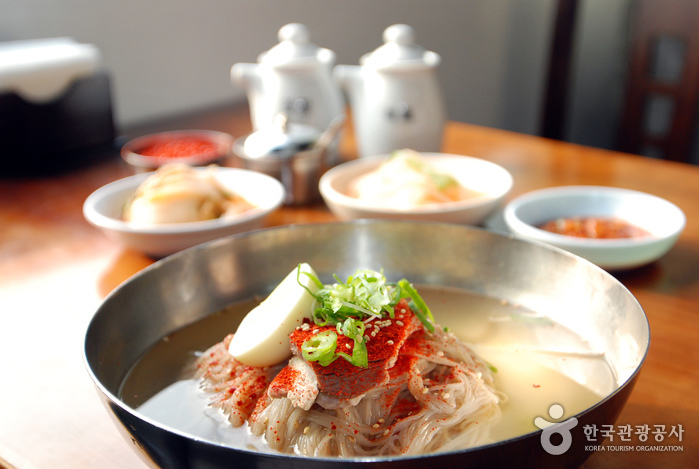

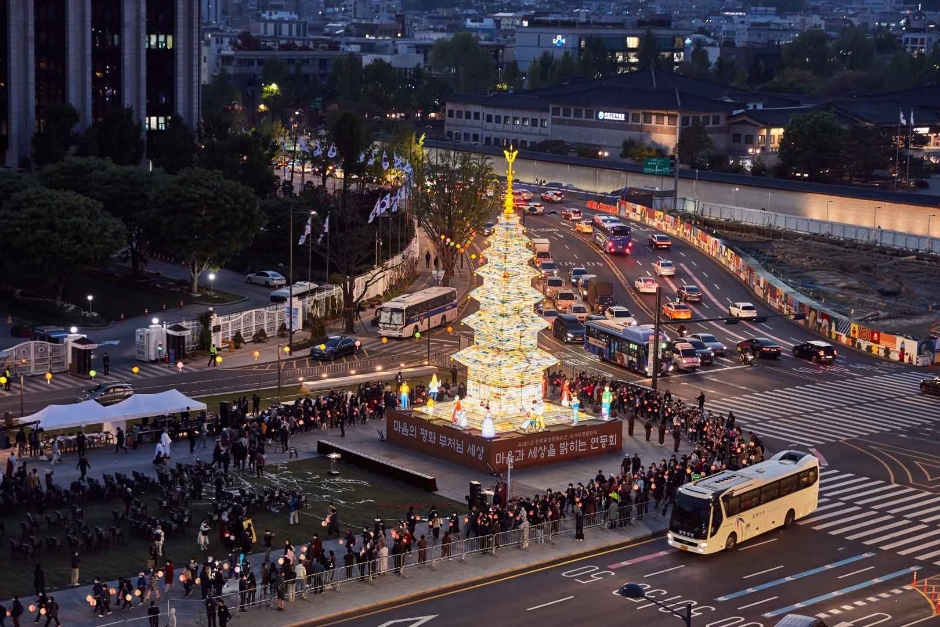
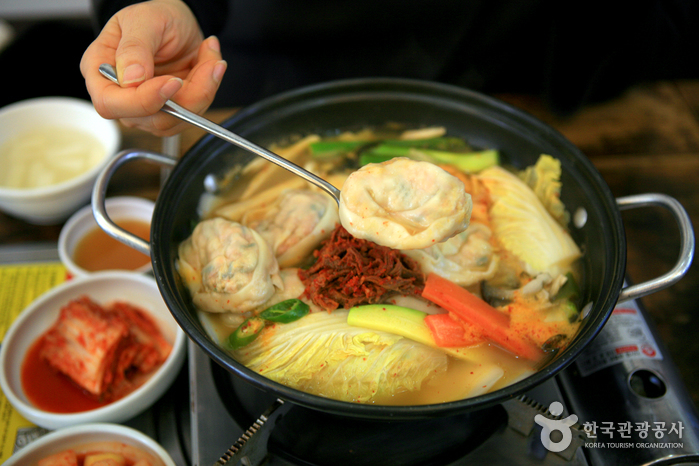
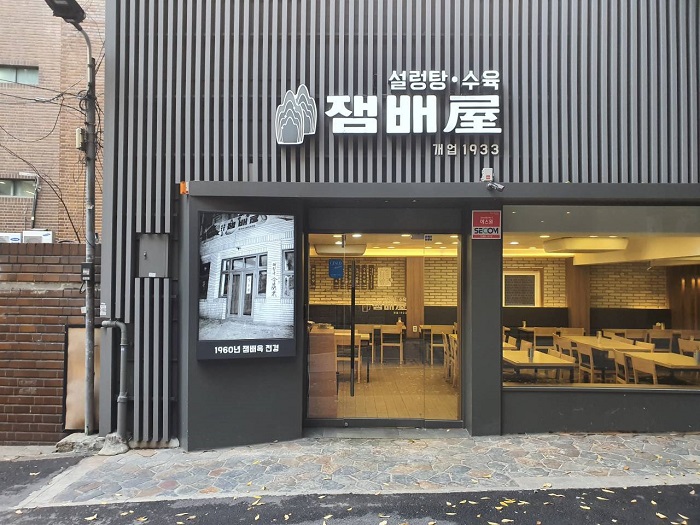
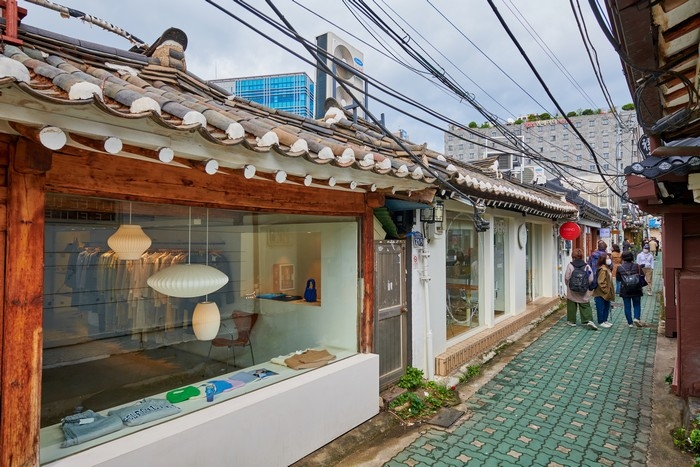
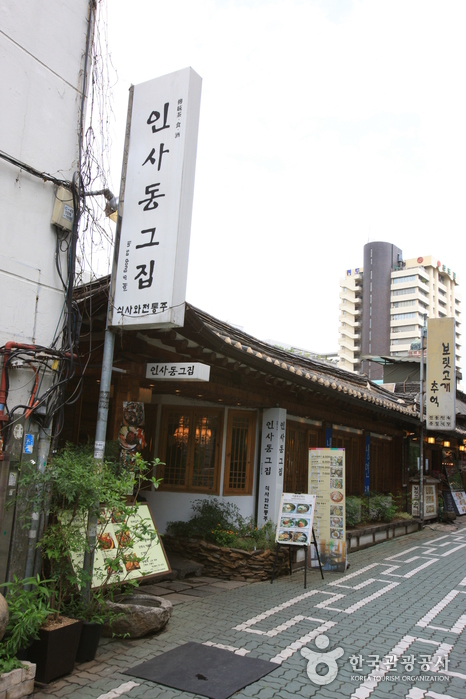
 Español
Español
 한국어
한국어 English
English 日本語
日本語 中文(简体)
中文(简体) Deutsch
Deutsch Français
Français Русский
Русский